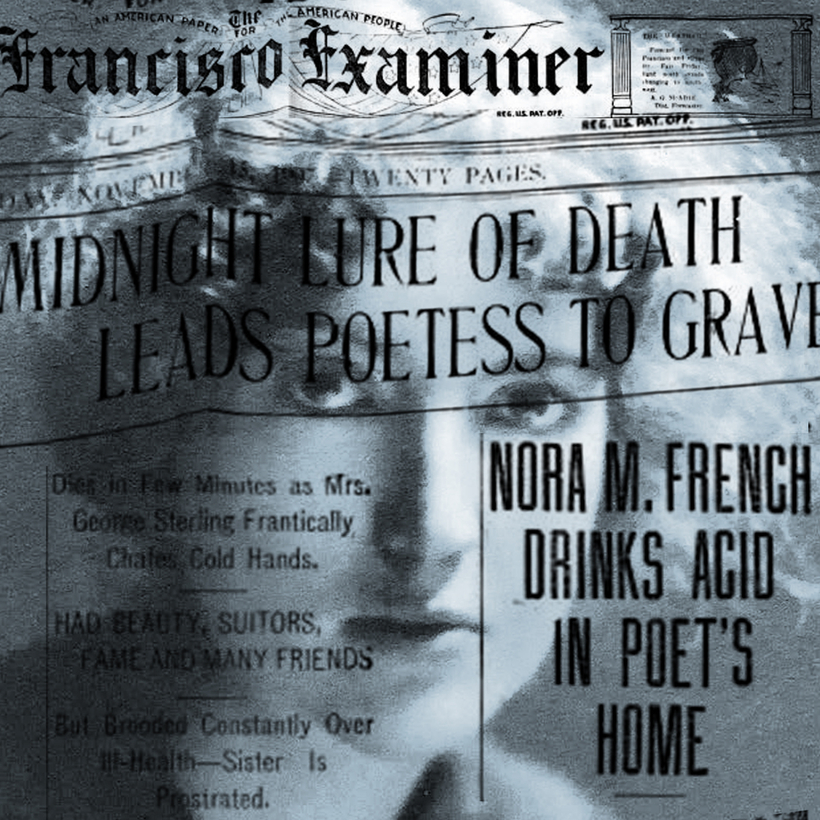When the 25-year-old Nora May French went home to self-administer an illegal abortion, in March 1907, she walked on shaky ground. Her San Francisco neighborhood, which had been devastated by an earthquake less than a year before, was regularly rattled by a nearby quarry. And there were other tremors, too. The prosperity that the U.S. had enjoyed since the 1870s was teetering, and many would be sent into ruin that year.
As an unmarried, working woman, French knew all about precarity. And she must have known that, without the expense of a doctor to help her, she was putting her life at risk. As it turned out, she would survive the abortion but not the year.

As its title implies, The Gilded Edge takes us to the limits of the Gilded Age, when the sheen was wearing thin. This isn’t just a temporal edge—all that glitters is not gold, as they say, and Catherine Prendergast, a professor of English at the University of Illinois at Urbana-Champaign, reconstructs the view from the margins, where the good times never quite took hold.
California Bohemia
French was a talented and beautiful poet, widely published during her lifetime, whose suicide, in the home of the writer George Sterling, became part of the romantic myth of the writers’ colony at Carmel-by-the-Sea, on the Monterey Peninsula.
French once described herself as “a kind of crazy freaky thing, without much idea how to behave and likely to do unexpected things”; a woman, in other words, who wanted to be free from the limits of menial work and conventional expectations, who wanted to be ungovernable. The feminist ideal of the New Woman might have arrived in the late 19th century, but French still found herself loaded with a lot of old baggage.
These days, Carmel is a pricey, desirable locale that takes its sanitized history very seriously. Prendergast blows off the nostalgic glow in energetic gusts.
For one thing, the Carmel community did not spring up spontaneously like a fount of inspiration. George Sterling set up home there in a deal with the Carmel Development Company, which he hoped would buy him time and space to write. His connections as the King of Bohemia—friendships with bona-fide celebrities such as Jack London—were hoped to be helpful in luring others to the area, creating the sort of arty scene that attracts wealthy buyers. In reality, very few of the eminent visitors Sterling brought ever spent much time there.
Less visible in the legend is the unremitting domestic labor required of Sterling’s wife, Carrie, who found herself hosting a stream of visitors. Tellingly, when French first arrived in Carmel, Carrie used French’s own word to describe her: the woman who would die in her arms at just 26, having poisoned herself with cyanide, was a “freak,” she thought—especially unnerving to a woman who had hauled herself into a new class through marriage and would have been perfectly content with the prosperous respectability her husband seemed dead set against providing for her.

Or maybe Carrie already had an inkling that French would become yet another of her husband’s many lovers. (Unable to escape the legacy of the affair, both Sterlings would eventually take their own lives, also via cyanide poisoning.)
For a book built around suicides, The Gilded Edge is pulsing with life. Literary stars, such as London and Upton Sinclair, traipse through unbecomingly. New Women plunge into the city bustle, commuting to new jobs. Part of the energy comes from the author’s palpable outrage, which emerges in otherwise chatty interludes that chart her efforts to uncover the real history behind a tale of scandal and tragedy.
It is not only the lives of women like French that seem built on sand, but their reputations too. Prendergast is furious that French’s description of her abortion (it breaks off, hauntingly, midsentence, as she contemplates “motherhood!,” a “still pool, holding the sky,” that she had stared into “day after day,” sometimes seeing the sky and other times “only my drowned butterflies”) is to be found in an archival collection bearing the name of “an abusive ex-boyfriend,” and that the same boyfriend edited the posthumous collection of her work. Women seem to hover just beyond the photographer’s frame. (Prendergast occasionally grants herself substantial creative license to fill in the missing details.)
We’re never in any doubt as to who the villains are in this story (all those patronizing men, so sure of their own talents, whose legacies, we suspect, were secured by other endowments), but the heroes emerge unexpectedly. Prendergast quotes liberally from French’s work, yet it is not the wraithlike poet but Carrie, Sterling’s “billion-ton wife-anchor,” through whose resolutely unimpressed eyes we enjoy this not so glittering parade.
Sarah Watling is a London-based writer and the author of Noble Savages: The Olivier Sisters

